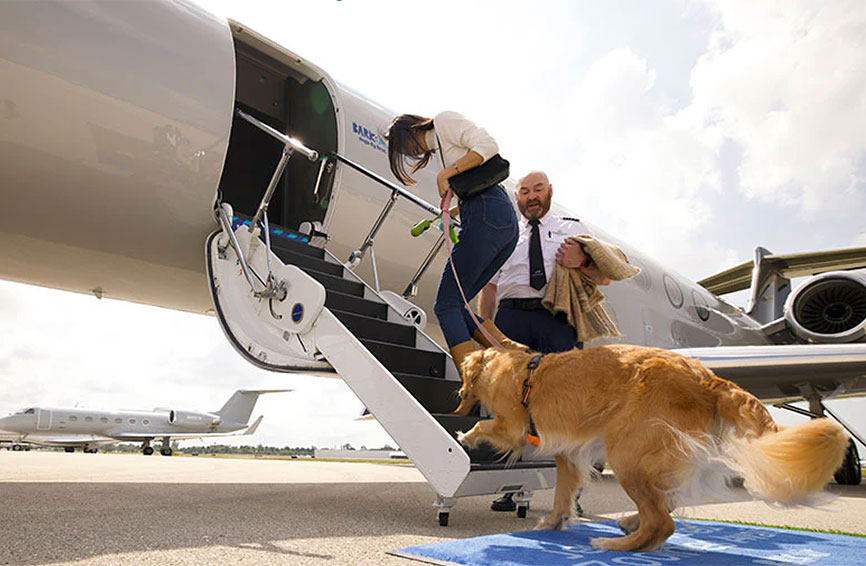Table of Contents
Reviewed by Danette Johnston, Certified Professional Dog Trainer (CPDT-KA) on April 29, 2022
Key Takeaways
- Service dogs come in many varieties and help people with physical, mental and emotional disabilities.
- Service dogs usually go through months of intense training, specific to their purpose.
- Service dog certification and the wearing of a vest or other marking is not required.
1. Many types of service dogs help many different types of people

Each disability requires a unique kind of service dog; the blind have very different assistance needs than those with epilepsy, as well as those with PTSD have different needs, and so on. Mobility assistance dogs are used by those in wheelchairs or with other mobility restrictions, picking up dropped items, turning off lights, and even opening doors. One impressive type of service dog is the diabetic alert dog, whose job is alert his human when insulin levels are low by smelling them. Dogs can be trained to detect the special scent that is released when insulin is too low, and that’s just one of the life-saving tasks service dogs do.
Certain types of service dogs work with those who have mental illnesses (further proof of the health benefits of dogs). Autism service dogs can be especially helpful according to service dog training company Project Chance, which works with children. “A solid, sound, and reassuring companion can help ease sensory overload, which is a common challenge for those with autism,” the group says. “With a dog by one’s side, an autism assistance dog can help by giving them a focal point, or a way to ground their random, unceasing environmental experiences.” PTSD service dogs are also becoming increasingly common as military veterans return home, providing essential support to former soldiers.
2. Service dog certification is not required
An important distinction between service dogs and other types of assistance animals is training. “Service animals are defined as dogs that are individually trained to do work or perform tasks for people with disabilities,” says the Americans with Disabilities Act of 1990. Since then, this definition has widened to include miniature horses. “Service animals are working animals, not pets. The work or task a dog has been trained to provide must be directly related to the person’s disability.”
Many cities and states do require dog licenses for all animals, including both working dogs and pets. Always check with your local Animal Control or shelter about your area’s laws. It’s also a good idea to look into other rules like leash laws, “quiet hours” (for barkers), and vaccination requirements.
3. A service dog goes through intense (and expensive) training

As we discussed before, a service dog must have training specific to its handler’s disability. Examples include but are not limited to: warning handlers with medical conditions like diabetes and epilepsy, assisting in coping and providing life-saving “interruptions” for those with PTSD and autism (everything from interrupting repetitive or injurious behavior to reminding the handler to take medication), and safely obeying commands from blind or deaf handlers. Many handlers train their own service dogs, tailoring the training to their specific needs.
Like many groups, Canine Companions for Independence – a non-profit organization – begins their dogs’ training from puppyhood. Future service dogs are placed with volunteer “puppy raisers,” who are charged with socializing the dogs to sights, sounds, smells, and distractions. Around a year-and-a-half old, the puppy raiser returns the puppy to be professionally trained for six to nine months, so they can learn the advanced commands that will support the work of an assistance dog. Obedience, retrieval, different environments, and handling of the dogs are all included in a reputable service dog training program.
Because of the length and intensity of this training, purchasing a service dog can be pricey – anywhere from $15,000 to $50,000 – and this purchase cost is not covered by health insurance. Service dogs’ expenses can be deducted from your taxes and there are many other ways to defray costs.
DIY – a less expensive way to train
Since there is not one national certification program, there are less costly ways to train a service dog. Depending on your skill and comfort level, you may be able to do some training on your own.
Most handlers will need the assistance of a professional trainer for training specific tasks, but independent trainers are generally less expensive than full board and train facility training. There are certified trainers (look for certifications such as CPDT, CTC, KPA, Fear Free Trainers) who can help with training service dog tasks; owners/handlers just need to seek them out.
4. Service dog vest

It’s a myth that a service dog is required to wear a vest or other identifying garb. Obviously many do wear vests to make their status as a working dog clear when entering businesses or other pet-prohibiting places. In recent years there’s been discussion about “fake” service dogs, or pet parents misrepresenting their pups as service animals, which the ADA has deemed a federal crime. It has been a worrisome hurdle in disability advocacy.
If you see a service dog, whether they are wearing vests, backpacks or harnesses, or you spot a dog in a business… well, a good rule to follow is to ignore the dog. Do not whistle, pet, or interact with a dog on the job. And if you don’t know if the dog is in service, err on the side of caution and simply move along. Trying to interact with or pet the dog can be a dangerous distraction for service dogs.
5. Service dog laws
The Americans with Disabilities Act is the basis for the legal rights of service dogs and handlers, stating:
- Dogs and miniature horses are allowed as official service animals.
- Service dogs’ training must be for a specific disability.
- They can accompany handlers in all public places.
Service dogs and emotional support animals can live with their handlers fee-free in no-pets properties under the Fair Housing Amendments Act and even fly for free thanks to the Air Carrier Access Act. Many business owners are confused by the similar-sounding titles of emotional support dogs, therapy dogs, and service dogs. Under the ADA, a (well-behaved) service dog is allowed in any public area – even restaurants, hospitals, grocery stores, and malls.
(Featured image via Reddit.com/laurathedoggiediva)






